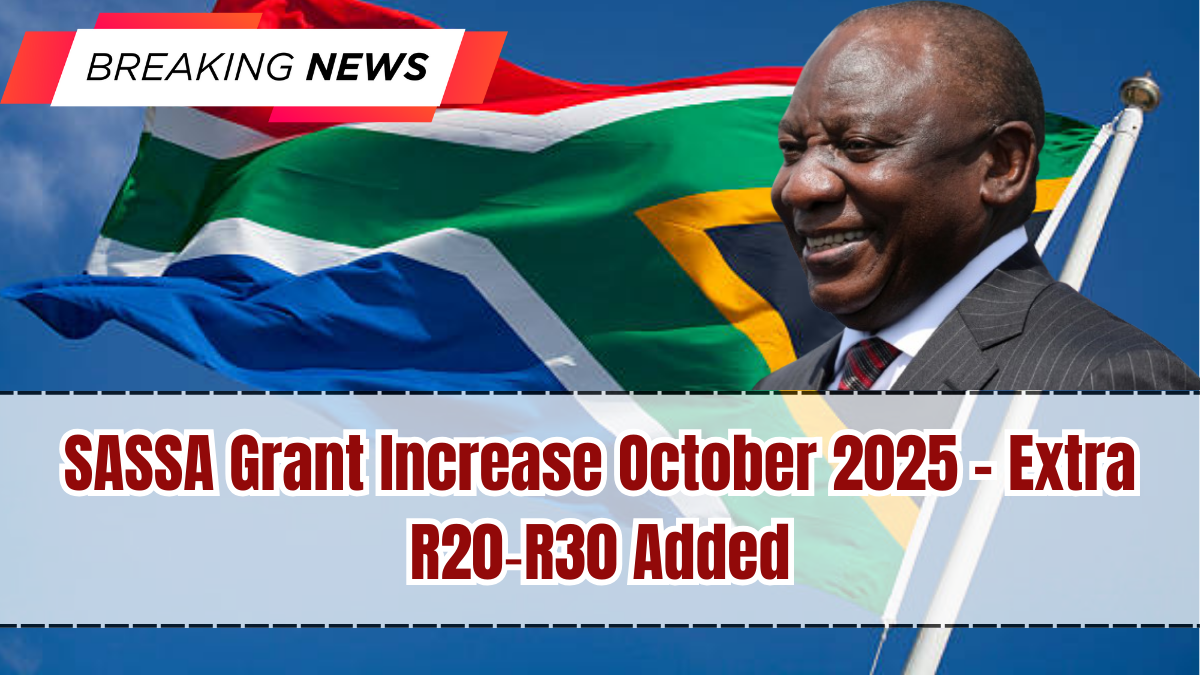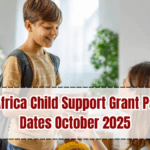Millions of South Africans depend on monthly grants from the South African Social Security Agency (SASSA) to survive. With food, transport, and electricity costs rising year after year, these grants are often the difference between dignity and despair. In 2025, the government confirmed a two-phase adjustment to social grants, and Phase 2 officially comes into effect in October 2025, adding R20 to R30 more per month for most grant categories.
This increase is part of the government’s broader plan to cushion vulnerable citizens from inflation and rising living costs. While the extra amount may seem modest, it ensures that grants at least keep pace with basic price increases, providing families and pensioners with some relief.

Which Grants Are Increasing in October 2025?
The October increase applies across several major categories of SASSA grants. These include:
-
Old Age Pension
-
Disability Grant
-
Child Support Grant
-
Foster Care Grant
-
War Veterans Grant
-
Care Dependency Grant
All of these will see an additional R20–R30 added from October onwards, depending on the category. This follows the first phase of increases earlier in April 2025.
Updated Grant Amounts
Here’s a breakdown of what beneficiaries can expect from October 2025:
-
Old Age Pension (under 75 years): Increased by R20, now R2,220 per month.
-
Old Age Pension (75 years and older): Increased by R20, now R2,240 per month.
-
Disability Grant: Increased by R20, now R2,220 per month.
-
War Veterans Grant: Increased by R20, now R2,240 per month.
-
Care Dependency Grant: Increased by R20, now R2,220 per month.
-
Foster Care Grant: Increased by R30, now R1,220 per month.
-
Child Support Grant: Increased by R20, now R530 per month.
These updated amounts bring all social assistance closer to matching inflation, though many advocacy groups argue that further increases are still needed.
Why Are Grants Increasing in Phases?
The South African government has adopted a two-phase approach to grant increases in 2025. The first phase, implemented in April, already raised amounts by R10–R50 across different categories. The second phase in October adds a further R20–R30.
This phased approach ensures that the government can manage its budget responsibly while still providing support throughout the year. It also means beneficiaries see their grants rise twice, rather than waiting a full year for adjustments.
How Beneficiaries Will Receive the Increase
The grant increases are automatic. Beneficiaries don’t need to apply or update details to receive the higher amounts. Payments will be made through the same channels already in use:
-
Direct deposits into bank accounts.
-
Cash withdrawals at ATMs or retail pay points.
-
SASSA cards, which continue to function for grant withdrawals.
From October’s payment cycle, the new amounts will reflect automatically.
Why the October Increase Matters
For millions of South Africans, even a small increase of R20–R30 makes a big difference.
-
Pensioners use the Old Age Grant to buy food, medicine, and pay for transport.
-
Parents depend on the Child Support Grant to provide school meals and clothing.
-
Families with children in foster care rely on the Foster Care Grant for daily essentials.
With inflation expected to remain high into 2025, the increase provides vital breathing space. While not enough to eliminate poverty, it helps reduce the gap between grant income and real household costs.
Government’s Commitment
The government has stated that it remains committed to protecting vulnerable groups through progressive increases in grants. Each year, adjustments are made during the National Budget to keep up with inflation and ensure that grants remain a reliable safety net.
Officials have also hinted at long-term reforms, including exploring the potential shift towards a Universal Basic Income Grant (UBIG). However, for now, phased increases remain the most practical way of balancing social support with budget limits.
Criticism from Advocacy Groups
Despite the increases, civil society groups argue that current grant amounts are still below the upper-bound poverty line, which is about R1,558 per person per month. For example, the Child Support Grant, even after the increase, remains at just R530—far below what’s needed to raise a child in today’s economy.
These groups continue to push for higher increases, especially for child-related grants, to better tackle hunger and malnutrition in poor households.
Preparing for the October Change
Beneficiaries are advised to:
-
Check updated payment schedules for October through the SASSA website or local offices.
-
Confirm that bank accounts are active and ready to receive payments.
-
Budget carefully, as even with the increase, rising food and transport costs may still stretch household finances.
Staying informed will help families make the most of the added support.
FAQs
Which SASSA grants are increasing in October 2025?
Old Age, Disability, War Veterans, Care Dependency, Foster Care, and Child Support Grants.
How much is the increase?
Between R20 and R30, depending on the grant category.
Do I need to apply to get the increase?
No. The adjustment is automatic and will reflect in your October payment.
What will the new Child Support Grant be?
From October 2025, it will rise to R530 per month.
Why are grants increased in phases?
To spread out the government’s budget impact and provide beneficiaries with support at two different points in the year.
Click here to know more.




